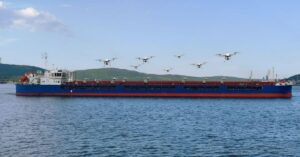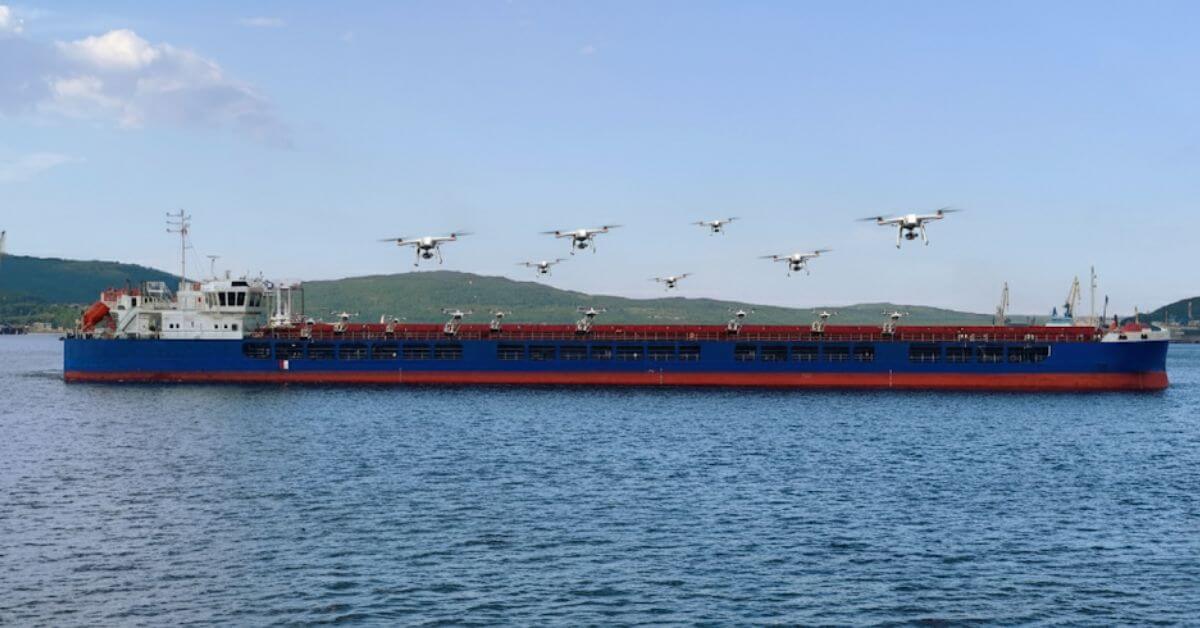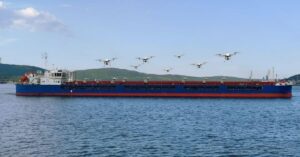
Vizhinjam Seaport Berths India’s Deepest Container Ship, Setting National Record
September 24, 2025
New Report Warns 90% Of World’s Major Ports Exposed To Climate Hazards
September 24, 2025

Danish authorities have named three Russian-linked ships as key suspects in a large-scale drone attack that forced Copenhagen Airport to shut down for almost four hours on the night of September 22, disrupting about 150 flights. Authorities have described the incident as the most serious attack yet on Danish critical infrastructure.
Around the same time, Oslo Airport in Norway was closed for three hours after drones were spotted, raising security concerns across Northern Europe. Danish police said the drones, some with blinking lights, approached from different directions before disappearing, suggesting a highly coordinated operation.
Prime Minister Mette Frederiksen called the attack deliberate, aiming to “disrupt and create unrest.” She noted similarities with recent incidents involving drone incursions into Polish and Romanian airspace and Russia’s recent violation of Estonian airspace.
Investigations by the Danish Security & Intelligence Service (PET) and Copenhagen police have focused on three vessels potentially used as drone launch platforms or decoys:
Astrol 1 (IMO 9906544) – a Russian-flagged coastal freighter, sanctioned by the EU, which sailed through the Øresund Strait on the night of the incident and made unusual maneuvers. Danish television reported that these movements coincided with the drone attacks, putting the ship under close watch.
Pushpa (IMO 9332810) – a tanker sailing under the flag of Benin, sanctioned for transporting Russian oil. NATO warships monitored the vessel for four hours during the incident. Pushpa has changed names three times in two years and is falsely flagged in Malawi, a landlocked nation without a legitimate registry. This false registration invalidates any insurance coverage. Ukrainian sources say it is part of a “shadow fleet” linked to Russia.
Oslo Carrier 3 (IMO 9366146) – a Norwegian cargo ship located about seven kilometers from Copenhagen Airport during the drone attack. The ship has Russian-speaking crew and its owner has offices in Kaliningrad, Russia. Authorities said its position during the incident looked suspicious.
Authorities said that proving direct involvement will be difficult. Launch rails and control systems for drones can be quickly removed, and personnel can transfer to other ships. Similar tactics have been reported before, such as with the German cargo ship Scanlark, detained on September 7 for suspected drone launches in August. Authorities said such cases require detailed forensic work, which is challenging at sea.
Denmark’s main airport, which handles nearly 30 million passengers a year, was shut down completely, causing major flight disruptions. Officials described the attack as “professionally executed” and “provocative.”
The incident comes amid rising tensions in Europe, with recent drone incursions, airspace violations, and cyberattacks. NATO and European security agencies have warned about growing threats from unmanned aerial systems.
Russian officials denied involvement. Vladimir Barbin, Russia’s ambassador to Denmark, said the incident “reveals a clear desire to provoke NATO countries into direct confrontation.”
Danish police are investigating all possibilities, including the idea that drones were launched from ships. A Royal Danish Navy vessel patrolled nearby waters after the attack. Norwegian security authorities said they are monitoring the situation and keeping in contact with national and international partners.
Reference: Reuters
Source: Maritime Shipping News


